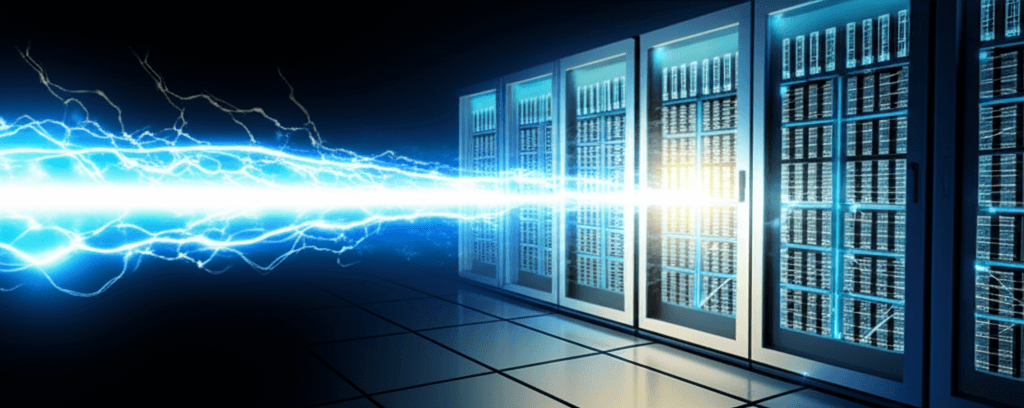TI, NVIDIA Tackle AI's Power Crisis with Breakthrough 800V HVDC System
Texas Instruments and NVIDIA partner on 800V HVDC to tackle AI's immense power demands, enabling sustainable next-gen data centers.
May 26, 2025

Texas Instruments has announced a significant collaboration with NVIDIA to pioneer new power management and sensing technologies critical for the next generation of artificial intelligence data centers.[1][2] This partnership is centered on the development of an 800-volt high-voltage direct current (HVDC) power distribution system, specifically engineered to energize NVIDIA's forthcoming AI servers.[3][4][1] The initiative aims to create more scalable, reliable, and efficient data center infrastructure to meet the relentlessly increasing demands of AI computing.[2][4] As AI workloads become more complex and pervasive, the power consumption of data centers is skyrocketing, necessitating a fundamental shift in how power is delivered and managed within these critical facilities.[4][5][6][7][8][9][10]
The core challenge this collaboration seeks to address is the escalating power requirements of AI data centers.[6][2] Currently, the power needed per data center rack, which stands around 100 kilowatts, is projected to surge to over 1 megawatt (MW) in the near future as AI capabilities expand.[4][5][6][7][8][3] Traditional 48-volt power distribution systems are proving inadequate for such high-power demands.[4][5][6][7][8] Attempting to power a 1MW rack using a 48V system would necessitate an estimated 450 pounds (nearly 205 kilograms) of copper, rendering such systems physically impractical, bulky, inefficient, and unsustainable for long-term scaling.[4][5][6][7][8][1] This physical limitation, coupled with significant energy losses inherent in lower voltage systems, underscores the urgent need for a new power delivery paradigm.[10][11] The collaboration between TI's expertise in power conversion and NVIDIA's leadership in AI aims to overcome these limitations by transitioning to an 800V HVDC architecture.[5][6][7][8][12][3][1]
The move to an 800V HVDC system promises several key advantages for next-generation AI data centers.[5][6][7][2] This higher voltage architecture is designed to significantly increase power density, allowing more power to be delivered within the same physical space.[4][5][6][7][8] It also improves conversion efficiency, meaning less energy is wasted as heat during power distribution and conversion.[4][5][6][7][8] By reducing resistive losses due to lower current for the same power delivery, the 800V system will minimize the growth in size, weight, and complexity of the power supply infrastructure.[4][5][8] This allows for thinner conductors, reducing copper requirements by as much as 45% compared to 54V DC systems at the megawatt scale.[11] Furthermore, DC systems inherently avoid AC-specific inefficiencies like skin effect and reactive power losses, contributing to overall efficiency gains.[11] This will enable engineers to design and scale power-efficient racks that can evolve with the accelerating demands of AI computing, leading to more compact and manageable power solutions.[4][5][6][7] NVIDIA is already working with a consortium of industry partners, including silicon providers like TI, to drive innovations for high-efficiency, scalable power delivery for future AI workloads, aiming to enhance reliability and reduce infrastructure complexity.[11][13] The target is to support 1 MW IT racks and beyond, with NVIDIA planning to implement this 800V HVDC infrastructure starting in 2027.[11]
The implications of this Texas Instruments and NVIDIA partnership extend beyond just power delivery; they touch upon the overall sustainability and operational efficiency of the AI industry. As AI models become larger and more computationally intensive, the energy footprint of data centers is a growing concern.[14][15][16][17][18] Innovations like the 800V HVDC system are crucial for mitigating this environmental impact by making data centers more energy-efficient.[9][2][19][20] Reduced energy consumption translates directly to lower operational costs for data center operators and a smaller carbon footprint.[20][18] The development also aligns with broader industry trends toward higher bus voltages in data centers, a shift driven by the need to reduce power losses and improve thermal management.[10][21] Efficient power management is increasingly recognized as a critical enabler for high-performance AI infrastructure, ensuring that the computational power needed for AI advancements can be delivered reliably and sustainably.[5][6][7][8][12][1] Experts predict that AI datacenter energy consumption could reach 146.2 Terawatt hours (TWh) by 2027, with overall global datacenter electricity consumption potentially doubling between 2023 and 2028.[17] This makes energy-efficient solutions paramount.[9][16][22][19][20][18] The collaboration will see TI develop the specific power conversion and sensing technologies required for NVIDIA's 800V HVDC infrastructure, although a precise timeline for deployment in NVIDIA's future data center builds has not yet been publicly disclosed.[2]
In conclusion, the strategic alliance between Texas Instruments and NVIDIA to develop an 800-volt HVDC power distribution system represents a critical step forward in addressing the immense power challenges posed by the rapid advancement of artificial intelligence.[4][5][6][7][23][8][2][1] By enabling more power-dense, efficient, and scalable data centers, this initiative will not only support the next generation of NVIDIA's AI servers but also contribute to a more sustainable and economically viable AI ecosystem.[4][5][6][7][2][1] As AI continues to reshape industries and daily life, such foundational innovations in power infrastructure are essential to ensure that the growth of AI is both technologically feasible and environmentally responsible.[14][9][16][19] The shift from traditional 48V systems to an 800V architecture is described by industry figures as a "paradigm shift," essential to meet previously unimaginable power demands driven by AI computing.[4][5][6][7][8][12][3][1]
Sources
[2]
[3]
[4]
[11]
[12]
[13]
[14]
[15]
[17]
[18]
[19]
[20]